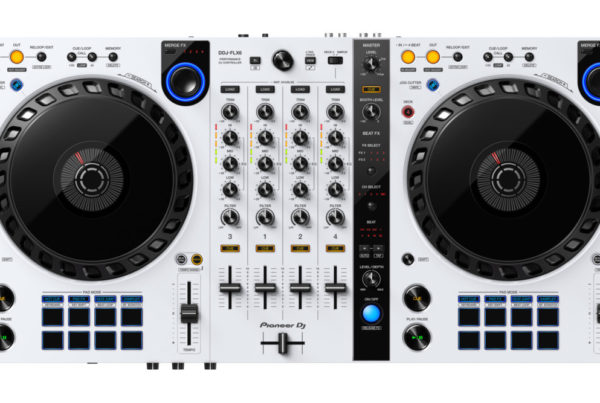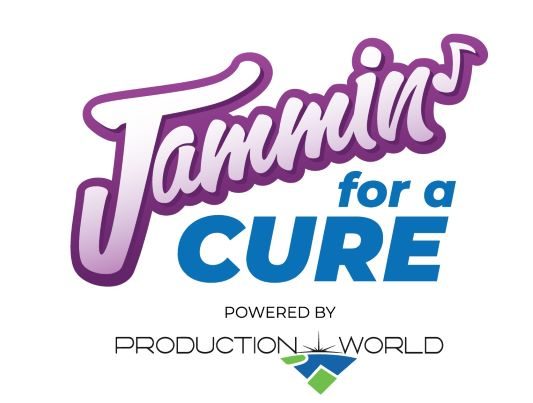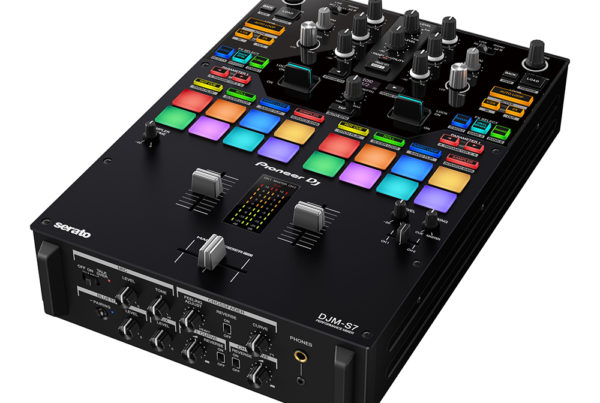The production warehouse at Production World, a live event production company in Edmonton, is a 10,000 square foot labyrinth and home to thousands of pieces of gear including but not limited to: speaker arrays, consoles, video walls, trusses, robotic and fixed lights, backline, computers, and miles of cables, each unit bar-coded and stored in an individual slot in the assigned aisle.
Kevin Lutz is the warehouse manager and a 10+ year veteran of the industry. One of his fundamental responsibilities is to make sure every technician has all of the equipment he needs for any event. It is a tap dance, especially when there are multiple shows occurring at the same time. Tracking all the gear means ensuring it works and, when it’s not, finding substitutes.
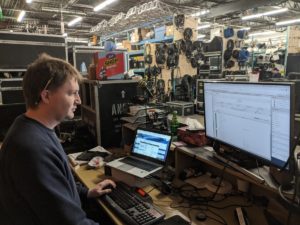
Production Warehouse – Lutz 2
Kevin’s role is to assist the different departments, which requires well-planned logistics as well as contingencies. “Each department will have different ways they want to do things,” says Lutz.”And so they will start debating over the rigging or over the communications hardware and then I have to figure out what’s going to go where and try to get everyone to agree to the group plan.”
One of the biggest challenges he faces is time. “Everything is happening live and everything is you can’t go back next week and you know fix it in your clients gonna’ be fine. There’s a curtain time. So my biggest issue is just how quickly everything comes at me on my good days. Like today, my shows are all tomorrow and the next day and I am planning ahead and I’m trying to proactively remove as many problems as I can tomorrow. We are going to be packing three shows loading them all.”
Listening to Lutz reminds us how it’s much like operating a moving company. A five-ton truck can handle 30 to 40 individual flight cases holding anywhere from one to 100 items. Tracking everything requires not only managing the inventory system, but programming it as well.
Certainly, the industry has gone through many changes in the last 20 years. “The digital console revolutionized things, but the things that need to be done were all pretty simple and each console was better than the last but the fundamental conversion to digital already happened. Now we can do so much more in so much less time, especially in production where we only have so many hours to set up the show.”
The area that has really evolved significantly is video. “When I started, ‘image mapping’ was just an idea. ‘Projector blending’ was something that was becoming mainstream and you had to be a specialist to do it. These days, I can teach them how to do that in a few hours. Also, advances in technology are actually creating a very interesting confluence between video and lighting because the software for both reaches towards a singularity between the two fields; video and lighting are both light and their software is now beginning to crosstalk.”
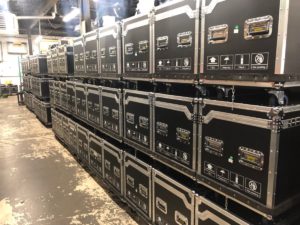
With all the challenges to keep up with technology, gear and the volume of events Production World is called upon to do, there is one reward Lutz appreciates the most. “What I look for when the technicians come back is hearing them say everything was there and they had no problems.”
Ultimately, for Lutz and the Production World team, everyday is moving day.


